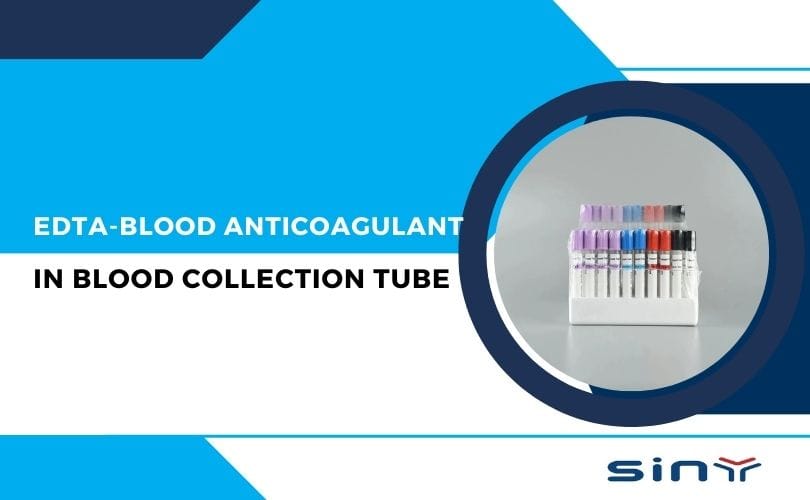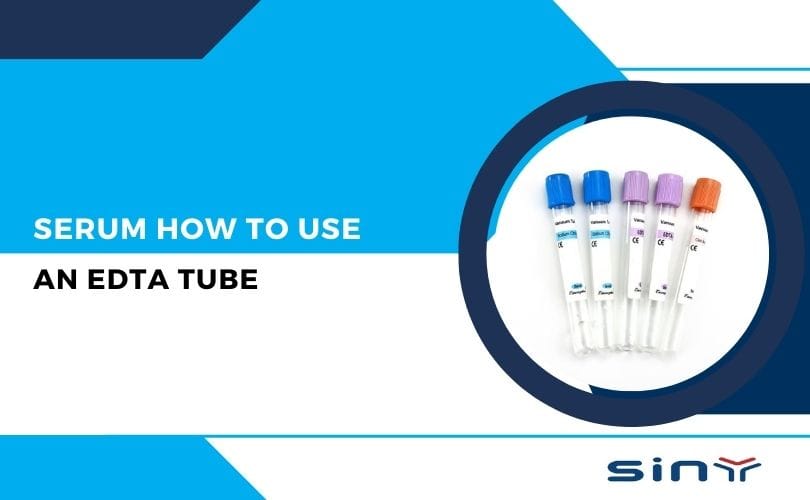Blood collection is a critical process in medical diagnostics, and the choice of anticoagulant in blood collection tubes plays a pivotal role in ensuring accurate test results. Among the various anticoagulants used, EDTA (Ethylenediaminetetraacetic acid) stands out as one of the most widely utilized due to its effectiveness in preserving blood samples. This blog delves into the significance of EDTA as an anticoagulant in blood collection tubes, its mechanism of action, applications, and benefits.
Introduction to Anticoagulants in Blood Collection Tubes
When blood is drawn, it naturally begins to clot, which can interfere with laboratory testing. To prevent this, laboratories use anticoagulants in blood collection tubes. These chemical substances prevent clot formation and preserve the integrity of blood components for analysis.
Different anticoagulants serve different purposes:
EDTA for hematology and molecular testing
Heparin for plasma chemistry
Sodium Citrate for coagulation studies
Among these, EDTA is one of the most widely used, thanks to its excellent preservation of cellular morphology and stability.
For a deeper dive into products designed specifically for this purpose, check out the range of EDTA Tubes for Blood Collection.
What is EDTA and Its Role in Blood Collection Tubes?
EDTA is a synthetic compound that acts as a chelating agent, binding to calcium ions in the blood. Calcium is essential for the coagulation process, and by sequestering these ions, EDTA prevents blood from clotting. This property makes it an ideal anticoagulant in blood collection tubes, ensuring that blood samples remain in a liquid state for various laboratory tests.
EDTA is commonly used in EDTA tubes for blood collection, which are designed to maintain the integrity of blood samples for hematological tests, such as complete blood counts (CBC) and HbA1c tests. These tubes are available in different forms, including EDTA vacuum blood collection tubes, which are widely used in clinical settings.
For more information on EDTA tubes, visit EDTA Tubes for Blood Collection.
Application Areas of EDTA Blood Collection Tubes
EDTA blood tubes are indispensable in various diagnostic fields:
Hematology: For complete blood count (CBC), hemoglobin, and blood morphology analysis.
Molecular diagnostics: EDTA preserves nucleic acids, vital for PCR and DNA/RNA-based tests.
Blood typing and crossmatching: Ensures sample integrity for transfusion compatibility.
Clinical chemistry: Though not preferred for serum chemistry, EDTA tubes assist in specific studies requiring anticoagulated plasma.
Visit the EDTA Tube Page for more clinical applications.
Advantages of EDTA Tubes Compared to Other Anticoagulants
| Feature | EDTA Tubes | Citrate Tubes | Heparin Tubes |
|---|---|---|---|
| Anticoagulation Mechanism | Chelates calcium ions | Binds calcium reversibly | Activates antithrombin III |
| Primary Use | Hematology tests | Coagulation studies | Plasma chemistry tests, electrolytes |
| Effect on Blood Cells | Preserves morphology | May cause cell swelling | Less preservative effect |
| Stability | High, suitable for long transport | Shorter stability, must process quickly | Moderate stability |
| Tube Color Code | Lavender/Purple | Light blue | Green |
This shows why EDTA is preferred for hematology and molecular tests enhancing diagnostic reliability.
Quality and Manufacturing Standards of EDTA Tubes
Reliable blood collection tubes must adhere to rigorous quality standards, including ISO certifications and GMP manufacturing protocols to ensure safety, sterility, and performance. Reputable manufacturers like Edtatube.com invest in precision coating of anticoagulant, tight vacuum control, and robust packaging to enhance usability in clinical environments.
Learn more about manufacturing standards and company details at Edtatube About Us.
Proper Handling and Usage of EDTA Blood Collection Tubes
Optimal use of EDTA tubes requires proper blood collection techniques:
Mixing: Gently invert tubes 8-10 times immediately after collection to evenly distribute the anticoagulant.
Filling: Avoid underfilling or overfilling to maintain the correct blood-to-anticoagulant ratio (critical for test accuracy).
Storage: Store tubes at recommended temperatures to maintain sample integrity during transport and prior to analysis.
Proper handling guidelines can be found at Edtatube Contact Us for support and inquiries.
Wrapping It Up
The use of EDTA as an anticoagulant in blood collection tubes has transformed laboratory diagnostics by ensuring accuracy, reliability, and stability of samples. From hematology to HbA1c testing, EDTA remains a cornerstone in modern laboratories.
If you’re looking for premium-quality tubes, don’t miss out on the collections from EDTA Tube and Siny Medical. These companies are committed to advancing medical diagnostics with cutting-edge products.
Trusted suppliers like EDTA Tube Company and Siny Medical provide high-quality products globally. You can also explore educational videos on Siny Medical YouTube Channel for better understanding of medical disposables.
FAQs
Why is EDTA the preferred anticoagulant in hematology?
EDTA preserves cell morphology and prevents platelet clumping, making it ideal for complete blood counts and other hematological studies.
Can EDTA tubes be used for coagulation tests?
No. Since EDTA binds calcium irreversibly, it disrupts clotting tests. Sodium citrate is preferred instead.
What’s the difference between K2EDTA and K3EDTA?
K2EDTA is spray-dried and doesn’t dilute the sample, while K3EDTA is liquid-based and may slightly dilute blood.
How should EDTA tubes be mixed after collection?
They should be inverted gently 8–10 times to ensure proper mixing without damaging cells.
Where can I purchase high-quality EDTA blood collection tubes?
You can buy directly from trusted suppliers such as EDTA Tube Official Store and Siny Medical.






